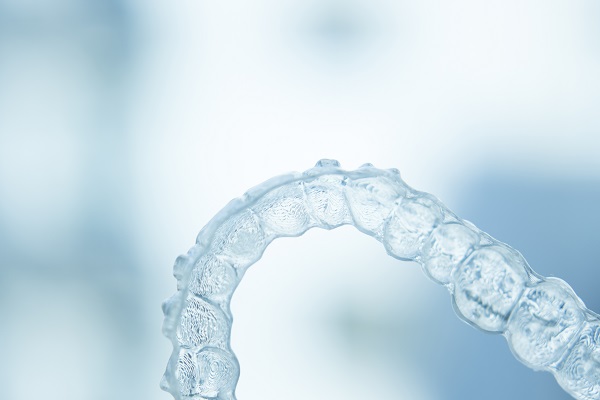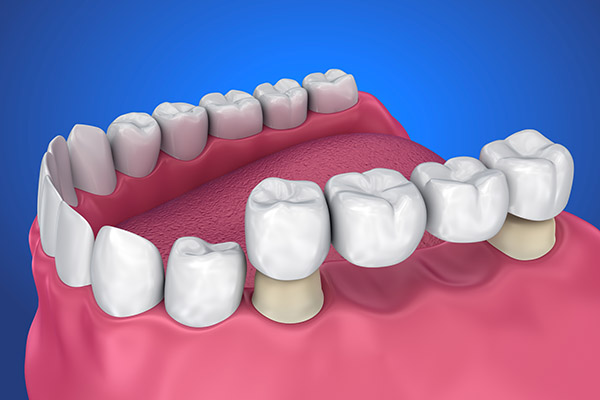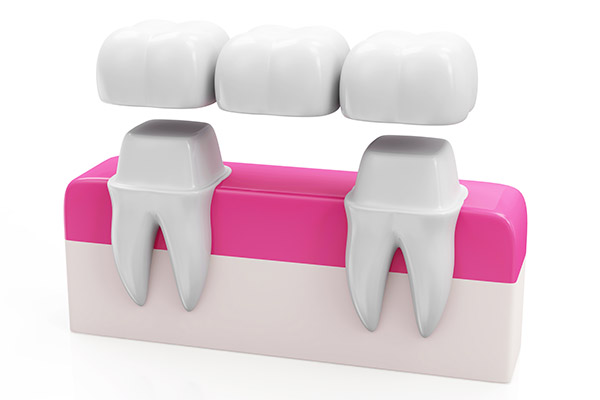The Invisalign Process Step by Step

Invisalign is a popular teeth straightening treatment option that general dentists often administer. It is one of many clear aligner options that work to discreetly straighten minor imperfections in the teeth. Unlike traditional braces, Invisalign® is an option that is said to be easier and more seamless.
Want to learn more about how the Invisalign process works? The step-by-step process is pretty straightforward, but it can be helpful to be aware of it, especially when considering the treatment. Learn more in this article as we highlight each step of the Invisalign process.
How does the Invisalign process work?
Outlined below is the step-by-step process of Invisalign treatment. Read on to learn more!
1. Custom treatment plan
The first step in getting Invisalign is working with the general dentist to come up with a custom treatment plan. An advantage of Invisalign is that it is completely custom-made to the patient's mouth, needs and desires. The general dentist will take digital images, X-rays and molded impressions of the patient's mouth to ensure that every aspect is notated.
Next, the Invisalign aligners are created in a special dental lab. The Invisalign software is used to predict how the patient's teeth will change over time, which allows for the creation of an entire set of Invisalign aligners. The patient will have to wait a few weeks for the lab to create the custom aligners.
2. Wearing Invisalign
Once the Invisalign has been created, the patient will return to the general dentist to begin treatment. The dentist will walk the patient through wearing Invisalign each day. Expectations and recommendations will be addressed to ensure that the patient understands how it works.
General dentists recommend that patients wear Invisalign for at least 23 hours a day to ensure that the treatment is effective. Other than oral hygiene and eating, the aligners should always be worn.
3. Adjustments
The next step in the Invisalign process is to undergo adjustments. Just like traditional braces, Invisalign too requires regular adjustments with the general dentist. Invisalign adjustments are easier than with braces. Instead of having wires and brackets tightened, the general dentist will simply administer the next set of aligners. The old aligners will be thrown away and the next set will be put in.
4. Retainers and maintenance
With all teeth straightening comes the maintenance part. Once the Invisalign treatment is complete, general dentists highly recommend a retainer to help maintain the results. Retainers are used to keep the teeth straight after the treatment has been completed. Most of the time, retainers are only to be worn at night while the patient is sleeping. In some instances, retainers are cemented into place, permanently.
Get started with Invisalign today!
Invisalign is a great teeth straightening option for someone looking to correct minor imperfections. Questions and concerns regarding Invisalign should be addressed by a general dentist. Reach out today to get started!
Request an appointment here: https://smilewellsouthbay.com or call SmileWell Family Dentistry & Periodontics at (310) 904-6375 for an appointment in our Torrance office.
Check out what others are saying about our dental services on Yelp: Invisalign in Torrance, CA.
Recent Posts
An emergency dentist can provide tooth-saving care in emergency dental situations. However, it is common not to know what constitutes a dental emergency nor how to handle common situations while waiting for dental care. Understanding when to seek help from an emergency dentist and how to manage the situation before you get to their office…
While regular dental visits are vital for maintaining oral health, an urgent dental problem requires an emergency dentist. Dental emergencies, including severe pain, injury, or infection, require immediate attention to prevent complications and ensure the best outcome. Knowing when to seek care from an emergency dentist can be key to preserving oral health.Severe tooth pain…
A cracked tooth may be a dental emergency if certain more severe symptoms develop. Although not every cracked tooth requires immediate attention, it is important to understand the more serious symptoms that indicate a cracked tooth is a dental emergency and requires prompt care.If your cracked tooth causes a high level of discomfort or increases…
Wondering when a tooth infection is considered a dental emergency? Read on to find out. This review discusses the situations in which an infected tooth is considered a dental emergency and requires immediate treatment from a dentist.An infected tooth that is not properly treated in a timely manner can lead to some severe issues, including…


